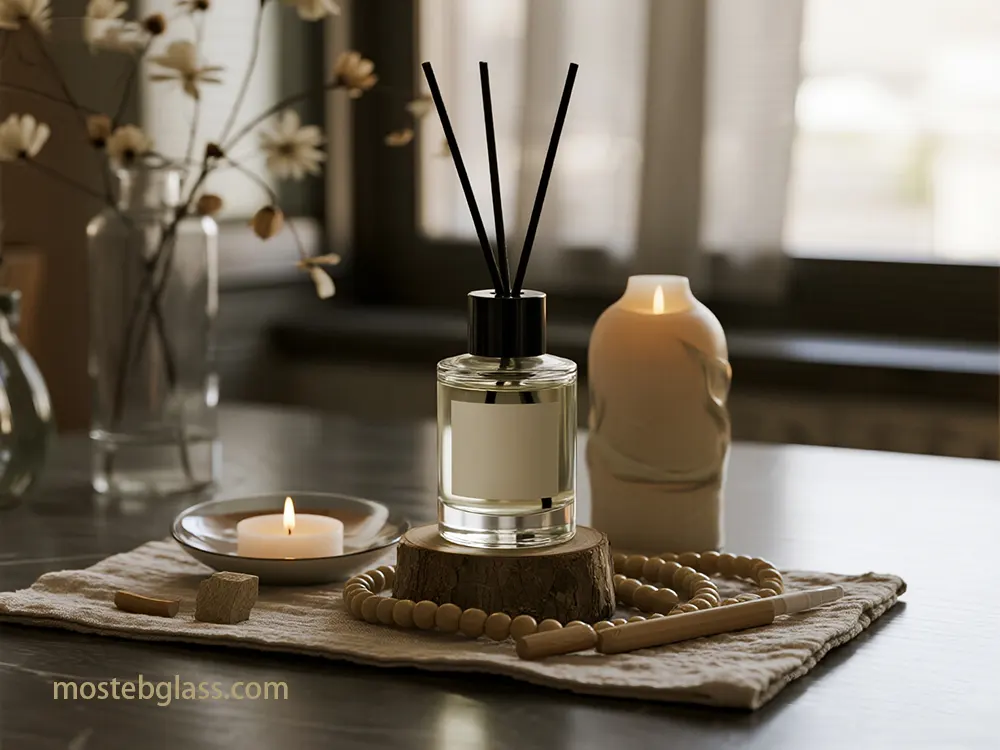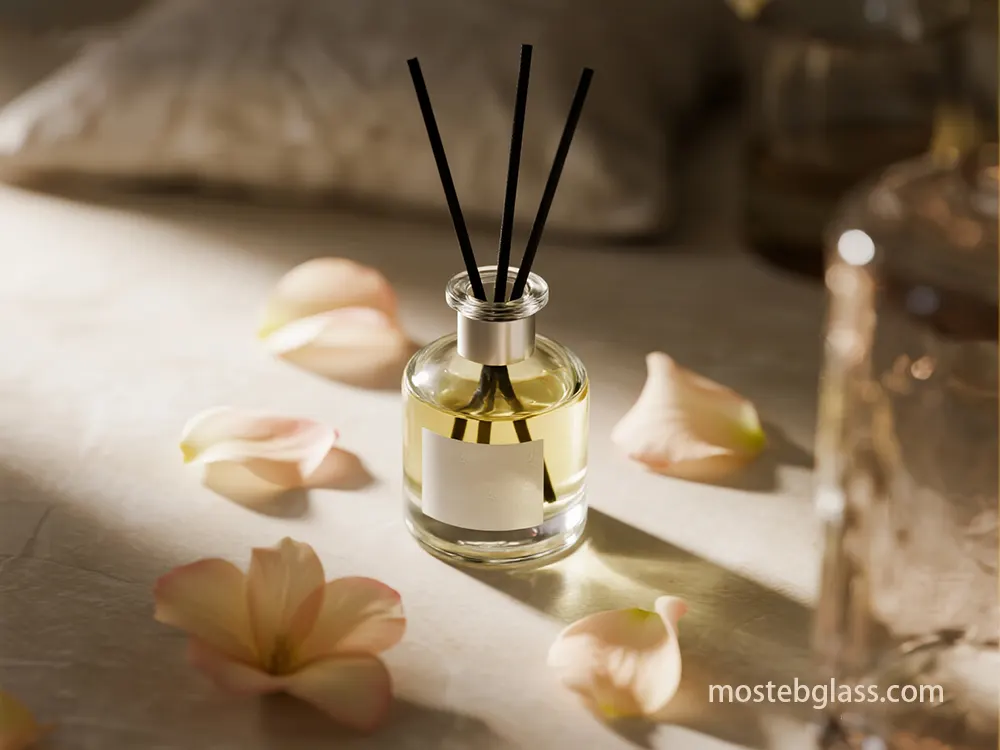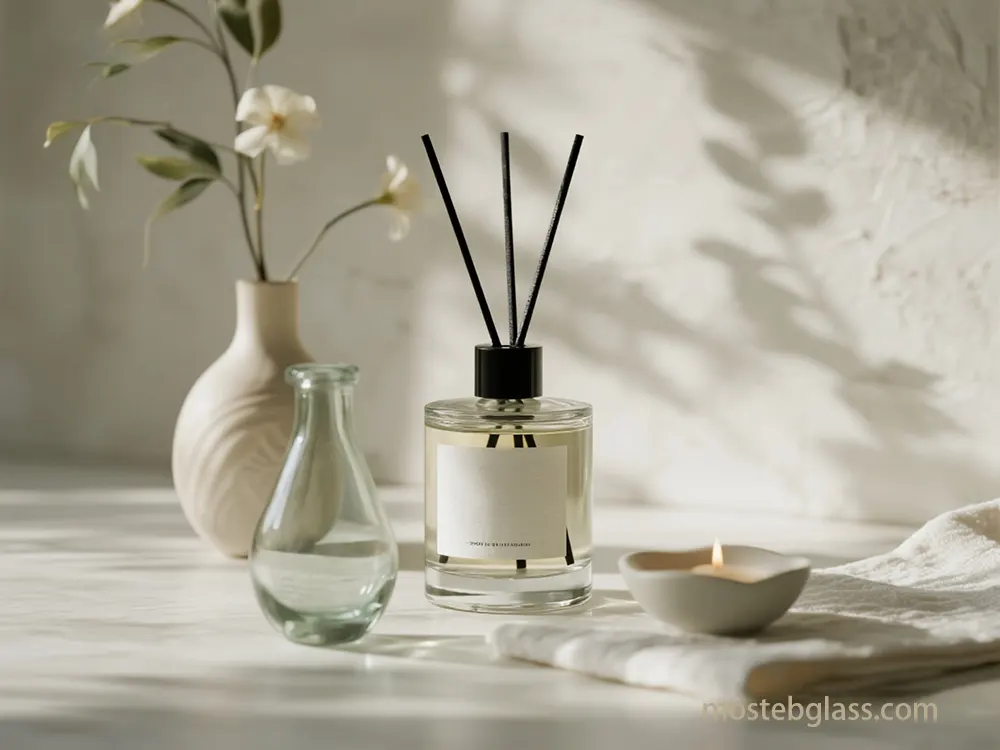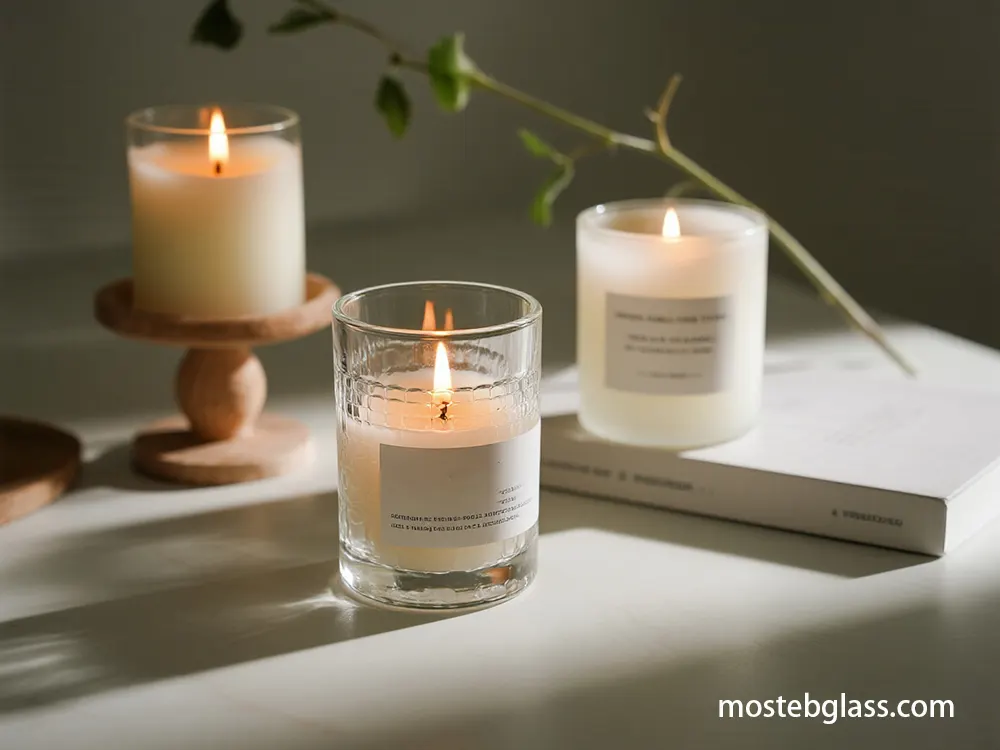1. Executive Summary
Lyxsegment:
För den exklusiva lyxmarknaden betonar kostnadserbjudandet exklusivitet, sällsynta varor och den unika historien bakom varje noggrant omvandlad del. Lyxtillverkare använder ofta filmisk storytelling för att kommunicera hållbarhet. Mosteb bör visa den komplexa resan för en kastad burk som omvandlas till en elegant, högteknologisk produkt, höjt konstnärlighet och miljöansvar.
Massmarknad:
För den bredare massmarknaden kan fokus ligga på prisvärdhet, tillgänglighet och praktisk användning. Detta segment nås genom att lyfta fram konkreta miljömässiga fördelar (avfallsreduktion, energibesparing) och praktisk, daglig användning, vilket gör hållbart livande möjligt.
3. Produktportfölj & Omvandlingsmetoder
Glasets mångsidighet, särskilt använda gnistburkar, tillåter en diversifierad produktportfölj, från minimal återanvändning till komplex materialomvandling, för att bemöta olika marknadssegment. Metodval beror på den önskade slutprodukten, operativ skala och målmarknad.
- 3.1. Product Categories from Used Candle Jars Our product portfolio will encompass a comprehensive range of items, designed for different market segments and leveraging various transformation methodologies:
- New Candles: The most direct circular application involves cleaning and refilling jars with new wax and wicks. This closed-loop solution can be incentivized through refill programs, encouraging repeat business and waste reduction.Mosteb could offer a premium refill service, providing discounts for returned jars, fostering loyalty and responsibility.
- Home Decor Items: Vases and Planters:
- Jars transform into decorative vases or mini planters for succulents, herbs, or small plants.Varied dimensions create diverse aesthetic appeal. Lighting Fixtures:

Upcycled jars become unique lamps, lanterns, chandeliers, or wall sconces, from simple DIY to professional designs.Integrating energy-efficient solar or LED lighting enhances eco-appeal.
- Storage Solutions: Jars are naturally suited for diverse storage: kitchen pantry (spices, dry goods), bathroom accessories (cotton balls, brushes), or craft supplies (buttons, beads).Personalized pincushions/sewing kits can be crafted by adding fabric tops .
- Decorative Accents: Jars can be artistically decorated using painting (frosted, stained glass), etching, or embellishments like lace, beads, jute rope, or fabric wraps.Seasonal/holiday decor offers a distinct niche.
- Craft Materials (Crushed Glass): Sand Art:
- Crushed, polished glass can be used for intricate layered sand art. Terrazzo/Concrete Aggregates:
- Crushed glass serves as a sustainable, visually appealing aggregate in concrete or terrazzo, offering eco-friendly alternatives and unique sparkling finishes for flooring, countertops, or architectural elements.Relevant for B2B construction/interior design partnerships. Art & Jewelry:
Finer crushed, polished glass can be used by artisans for mosaics, resin art, or unique components in handcrafted jewelry.
Glass Powder/Foam Glass:
Advanced processing transforms glass into fine powder or lightweight foam glass for specialized industrial applications like insulation, composite fillers, or advanced ceramics.
3.2. Transformation Methodologies
- Methodologies vary based on end-product and operational scale, ensuring efficiency and quality. Direct Upcycling/Repurposing:
- Minimal alteration, focusing on cleaning and minor enhancements.
- Cleaning and Preparation: Thorough cleaning removes wax, soot, and labels. Methods include freezing, hot water baths, or electric/stovetop griddles for wax removal.Labels are removed with hot water, soap, or specialized solvents.
- Minor Modifications: Adding new lids, functional pumps (for soap dispensers), or decorative elements enhances appeal and utility.
- Material Transformation (Crushing and Polishing): Breaking down jars into cullet or fine sand, then potentially polishing and coloring.
- Glass Crushing Equipment: Small-Scale Artisanal:
- Compact, user-friendly crushers (e.g., LSM Engineering G5, AaquaTools GLS 2.0) efficiently convert bottles into sand-like material.Budget options start around $890.
- Industrial Scale: Robust hammer or vertical crushers process larger volumes, producing fine cullet or sand with adjustable particle size (0.5mm-20mm).Brands like Compactors Inc. and Gradeall offer solutions with throughput from 50 kg/hr to 5,000 kg/hr.
- Glass-to-Sand Machines: Specialized machines (e.g., Expleco Limited, Krysteline Technologies) convert glass directly into high-quality sand or finer powder/foam glass.
- Glass Polishing Equipment: Artisanal Polishing:
- Mini glass polishing machines, pads, abrasive belts, and diamond wheels achieve desired finishes for small-scale projects.GT Tools offers kits for removing blemishes. Industrial Polishing:
Advanced flat glass edging machines (e.g., Neptun, Battellino) provide precision grinding and surface polishing for high-volume production.Robotic polishing ensures consistency and precision for large-scale operations.
Coloring & Treating Crushed Glass:
- Inks and Dyes: India ink or translucent spray paints provide vibrant, lasting hues.Alcohol inks can be used, but may fade.
- Surface Treatments: “Rub and Buff” adds metallic/colored finishes to edged glass.Decoupage mixed with liquid food coloring coats containers for artistic effects.
- 3.3. Operational Considerations Safety Protocols:
- Handling glass calls for strict PPE: reduce-resistant gloves, protection glasses, lengthy sleeves, long lasting pants, closed-toe shoes, and hard hats, especially in crushing areas.Ongoing schooling in secure dealing with, dust manage (ventilation, moist slicing), and chemical safety is important. Maintenance:
- Regular, proactive upkeep of all crushing and polishing device guarantees longevity, most effective performance, and consistent pleasant. This includes daily exams, ordinary cleansing, and monthly inspections of components.
- Strategically combining these methodologies, Mosteb can create a diverse, appealing, high-quality product line, maximizing value from every used candle jar. 4. Supply Chain & Operational Scalability
- Establishing a robust, reliable, and scalable supply chain for used candle jars is critical for long-term success, involving efficient collection, logistics management, and appropriate operational scale. 4.1. Anticipated Sources and Volume of Used Candle Jars
- We envision a multi-pronged sourcing approach, ensuring consistent, high-quality, and sustainable supply: Direct Consumer Collection Programs:
- Incentive-Based Returns:
- Implementing attractive programs (e.g., similar to Slow Made, Yankee Candle/TerraCycle partnership) where consumers receive shop credits, discounts, or free products for returning clean, unbroken jars.This engages customers, fosters loyalty, and promotes circular consumption. Convenient Drop-off Locations:
- Establishing accessible drop-off points at our retail locations, partner stores (e.g., zero-waste shops), or community centers. Placing containers where glass is frequently purchased (liquor/grocery stores) can maximize collection. Mail-Back Programs:
- For wider geographical reach, a free shipping mail-back program could be explored, especially for high-value jars.
- Cleaning Requirements: Clear instructions for cleaning jars (e.g., freezing to remove wax, washing with soap/hot water) will be provided to minimize contamination.
- Partnerships with Candle Manufacturers: Post-Consumer Jar Recovery:
- Regular, proactive upkeep of all crushing and polishing device guarantees longevity, most effective performance, and consistent pleasant. This includes daily exams, ordinary cleansing, and monthly inspections of components.
Collaborating with manufacturers to recover their post-consumer jars returned through their programs or from their waste streams. This aligns with Extended Producer Responsibility (EPR) standards.
Co-Branding Opportunities: Exploring at the same time useful co-branding projects in which Mosteb upcycles jars from a companion producer, growing precise product strains highlighting shared sustainability commitments.
Waste Stream Diversion: Engaging with producers who’ve inner waste streams of imperfect, mislabeled, or unsold jars for upcycling.
Waste Management Streams:
Material Recovery Facilities (MRFs):
Partnering with local MRFs to source glass, focusing on suitable candle jar streams. This requires negotiation and quality control due to contamination challenges in single-stream recycling.
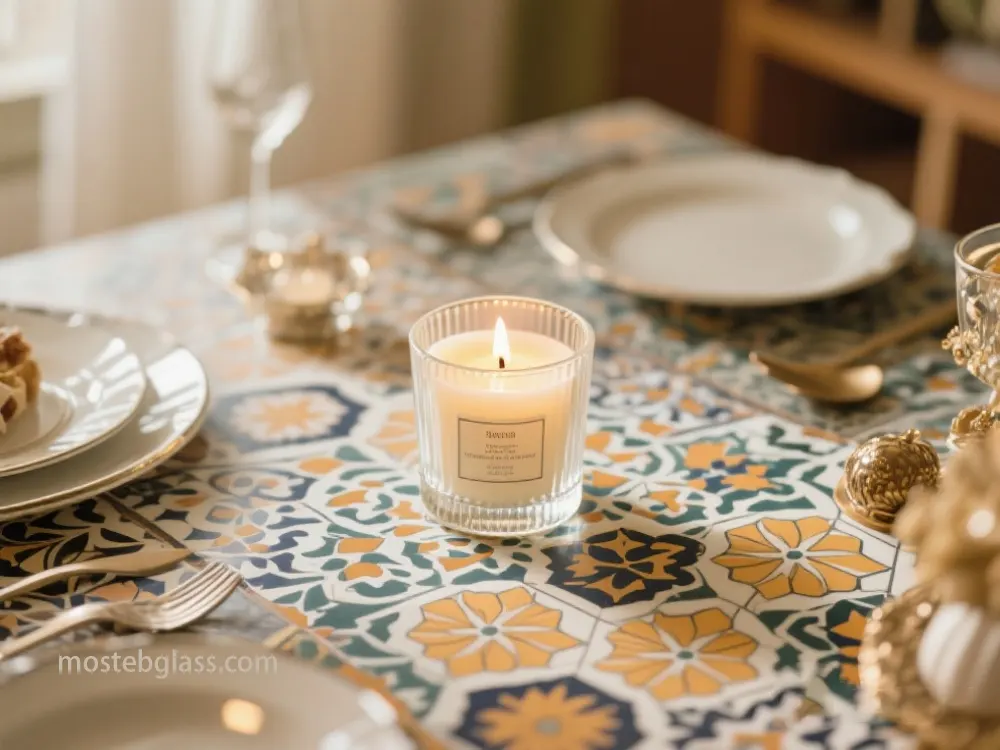
“Don’t Trash Glass” Programs:
Adapting successful initiatives like Diageo’s program for collecting glass from hospitality businesses could provide larger commercial volumes.
- Digital Waste Marketplaces:
- Utilizing platforms like Resourcify, Recykal, or LeeCycle to connect with waste generators, streamlining sourcing and potentially offering real-time trading for glass cullet.ASPIRE facilitates industrial symbiosis. 4.2. Operational Scalability
- Operational scalability will be a phased approach, moving from artisanal, small-batch production to industrial-scale operations as demand and supply grow. Small-Batch Artisanal (Initial Phase):
- Focus: High-value, unique home decor and new candles emphasizing bespoke craftsmanship, design, and storytelling.
- Collection: Primarily direct consumer returns and localized community partnerships.
- Processing:
- Investment in greater efficient semi-automated cleansing/sorting, and larger small-scale crushers for expanded volumes. Medium-Scale Expansion:
- Expanding product lines, introducing more standardized home goods, and developing B2B offerings. Significant expansion, formalizing partnerships with local businesses, smaller candle manufacturers, and regional drop-off networks.
- Investment in more efficient semi-automated cleaning/sorting, and larger small-scale crushers for increased volumes. Large-Scale Industrial Recycling (Long-Term Vision):
- Mass production of upcycled products, potentially including high-volume glass aggregates for construction, maximizing environmental impact.
- Formal, large-volume agreements with major candle manufacturers for post-consumer jar recovery and deep integration with municipal waste management. Significant capital investment for fully automated glass processing, including AI-powered sorting (up to 70 bottles/min, 99.8% accuracy),automatic glass breaking,and sophisticated polishing lines.Requires robust industrial dust control and safety protocols.
- Benefits: Achieving economies of scale, massive landfill waste reduction, and maximizing environmental/economic impact.
- 5. Financial Projections & Profitability Pathways Economic viability is based on meticulous analysis of price systems, various revenue streams, and strategic pricing. While upcycled products can be more costly to offer than the ones from virgin materials due to in depth cleaning, sorting, and first-class manage,their particular rate proposition, sustainability narrative, and growing client call for can pressure large profitability.
5.1. Cost Structures
Sourcing Costs:
- While raw material (used jars) is “free,” collection programs incur costs: financial incentives for consumer returns,logistical transportation from collection points, and potential fees for pre-sorted glass from MRFs or manufacturers. Sourcing from multiple, dispersed locations can increase transportation costs.
- Processing Costs: Labor-intensive process to remove wax, soot, and labels.Labor is a significant cost driver, especially for direct upcycling.
- Crushing and Polishing: Initial capital investment in equipment (e.g., small-scale crushers $5,000-$20,000, industrial pulverizers $20,000-$50,000).Ongoing operational costs include power (e.g., ≤1.5 kWh/ton),maintenance, and labor. Quality Control:
- Ensuring consistency in upcycled materials is challenging due to variations. This necessitates rigorous, customized quality control processes, adding to production costs. Manufacturing Costs:
- Labor:
- Processing Costs: Additional Materials:
- Crushing and Polishing: Initial capital investment in equipment (e.g., small-scale crushers $5,000-$20,000, industrial pulverizers $20,000-$50,000).Ongoing operational costs include power (e.g., ≤1.5 kWh/ton),maintenance, and labor. Overhead:
- Ensuring consistency in upcycled materials is challenging due to variations. This necessitates rigorous, customized quality control processes, adding to production costs. Marketing and Sales Costs:
- Expenses for brand development, digital marketing, market/trade event participation, and distribution logistics.
- Processing Costs: Direct Product Sales:
- Crushing and Polishing: Initial capital investment in equipment (e.g., small-scale crushers $5,000-$20,000, industrial pulverizers $20,000-$50,000).Ongoing operational costs include power (e.g., ≤1.5 kWh/ton),maintenance, and labor. B2B Sales:
- Ensuring consistency in upcycled materials is challenging due to variations. This necessitates rigorous, customized quality control processes, adding to production costs. White-Label/Custom Orders:
- Producing custom upcycled products for other manufacturers or clients searching for sustainable factors in their lines or advertising and marketing. Cullet/Glass Sand Sales:
Selling excess processed glass cullet or sand to different manufacturers (e.G., production aggregates, new glass production, abrasive blasting). While cullet prices are noticeably low ($10-$149/ton),this move offsets processing charges and contributes to a broader circular financial system.
Carbon Credits (Speculation):
Recycling glass notably reduces GHG emissions as compared to virgin glass production because of decrease electricity necessities.Companies could potentially earn carbon credits for verifiable emission reductions, supplying a unique destiny sales circulate.This calls for rigorous monitoring and 1/3-birthday celebration verification, potentially via structures like RecyclX.
- 5.3. Pricing Strategies & Profitability Pathways Profitability within the round economy for upcycled items is predicated on price-based totally pricing, aggressive positioning, and leveraging the sustainability narrative to command a top rate.
- Value-Based Pricing:
- Surface Treatments: Competitive Pricing:
While value-based, prices ought to stay aggressive within the broader upcycled/sustainable home items market. This might also contain strategically lower fees for mass-marketplace segments or highlighting accessibility. - Tiered Pricing: A tiered structure caters to diverse market segments: premium for unique handcrafted decor, mid-range for refilled candles, and accessible for basic functional storage.
- Surface Treatments: Competitive Pricing:
- Subscription Models/Leasing (Speculation):
- For refillable/reusable products, subscription or leasing programs could lower upfront costs for consumers while promoting extended use and waste reduction. Optimizing Cullet Composition:
- While 100% glass recycling is ideal, 25% cullet composition is often optimal for new glass production, balancing cost-effectiveness and environmental benefits.Selling excess cullet to other industries might be more profitable than 100% internal reuse if the external market is strong. Government Incentives and Grants:
- Securing grants, loans, and incentives for recycling, waste reduction, and circular economy initiatives significantly improves financial viability and accelerates growth.Programs like CalRecycle’s Recycled Glass Processing Incentive Grant Program offer substantial assistance. Circular Taxation Advocacy:
- Advocating for policy adjustments like decreased VAT on restore services, upcycled merchandise, or items extending product existence cycles ought to create a greater favorable monetary environment for circular businesses. Operational Efficiency via Automation:
While requiring better initial capital, strategic automation in cleaning, sorting, and crushing can drastically reduce long-time period labor costs, increase processing speed, and improve cullet exceptional.Crucial for massive-scale profitability.
- Strategic Partnerships: Primary sales from selling diverse upcycled candles, home decor, and other products without delay to clients thru e-trade, retail, or pop-up activities.
- partners with waste brokers (eg, Royal oak, GFL) to connect industrial recycles to large versions. Supplying custom or bulk upcycled merchandise to organizations (motels, eating places, offices, interior designers) for decor or company gifts, a great scalable channel.
- White-Label/Custom Orders: Producing custom upcycled products for other manufacturers or clients searching for sustainable factors in their lines or advertising and marketing.
- Cullet/Glass Sand Sales: Selling excess processed glass cullet or sand to different manufacturers (e.G., production aggregates, new glass production, abrasive blasting). While cullet prices are noticeably low ($10-$149/ton),this move offsets processing charges and contributes to a broader circular financial system.
- Carbon Credits (Speculation): Recycling glass notably reduces GHG emissions as compared to virgin glass production because of decrease electricity necessities.Companies could potentially earn carbon credits for verifiable emission reductions, supplying a unique destiny sales circulate.This calls for rigorous monitoring and 1/3-birthday celebration verification, potentially via structures like RecyclX.

5.3. Pricing Strategies & Profitability Pathways
Profitability within the round economy for upcycled items is predicated on price-based totally pricing, aggressive positioning, and leveraging the sustainability narrative to command a top rate.
- Position sustainable blown glass ornaments in new, dedicated “eco-friendly” sections. Collaborate with brands that are Certified Sustainable to drive broad awareness of benefits through in-store digital merchandising. Provide a range of prices to appeal to a more general shopper. Prices are set primarily based on perceived great, specific design, functionality, and ordinary price of the upcycled product, no longer completely production price.For Mosteb, this emphasizes particular layout, artisanal craftsmanship, tangible environmental advantages (decreased carbon footprint, waste diversion), and tremendous social impact (process introduction, skill improvement).Consumers increasingly pay a top rate for price-aligned merchandise.
- Competitive Pricing: While value-based, prices ought to stay aggressive within the broader upcycled/sustainable home items market. This might also contain strategically lower fees for mass-marketplace segments or highlighting accessibility.
- Tiered Pricing: A tiered structure caters to diverse market segments: premium for unique handcrafted decor, mid-range for refilled candles, and accessible for basic functional storage.
- Subscription Models/Leasing (Speculation): For refillable/reusable products, subscription or leasing programs could lower upfront costs for consumers while promoting extended use and waste reduction.
- Optimizing Cullet Composition: While 100% glass recycling is ideal, 25% cullet composition is often optimal for new glass production, balancing cost-effectiveness and environmental benefits.Selling excess cullet to other industries might be more profitable than 100% internal reuse if the external market is strong.
- Government Incentives and Grants: Securing grants, loans, and incentives for recycling, waste reduction, and circular economy initiatives significantly improves financial viability and accelerates growth.Programs like CalRecycle’s Recycled Glass Processing Incentive Grant Program offer substantial assistance.
- Circular Taxation Advocacy: Advocating for policy adjustments like decreased VAT on restore services, upcycled merchandise, or items extending product existence cycles ought to create a greater favorable monetary environment for circular businesses.
- Operational Efficiency via Automation: While requiring better initial capital, strategic automation in cleaning, sorting, and crushing can drastically reduce long-time period labor costs, increase processing speed, and improve cullet exceptional.Crucial for massive-scale profitability.
- Strategic Partnerships: Samarbeta med främsta ljusköpare för återvinning av gröna burkar kan markant minska inköpskostnader och skapa gemensamt värde. Partnerskap med sociala företag kan leda till priseffektiva arbetslöst lösningar även med att förbättra socialt ansvar.
Genom att hantera kostnader, diversifiera intäkter och adoptera avancerad prissättning som betonar unik värde och bra effekt, kan Mosteb etablera en hållbar, värdefull och genomslagskraftig utmaning som bidrar meningsfullt till cirkulär ekonomi.
6. Miljö- & socialt ansvarsbedömning
Att omvandla använda ljusburkar ligger i grunden i cirkulär ekonomis idéer, vilket ger utmärkt högkvalitativ miljö- och social inverkan. Att kvantifiera och öppet kommunicera dessa fördelar är avgörande för att visa värde till alla intressenter.
6.1. Miljöinverkan bedömning
En komplett livscykelsbedömning (LCA) kommer att kvantifiera miljöfördelarna med att leda använda ljusburkar bort från skräpåtervinningsplatser. Enligt ISO 14040/44-standarder, ett “från vaggan till gravan”-metod kommer att räkna alla produktlivscykelssteg, med betoning på återanvändning och långa cykelåtervinning.
- Minskad skräpåtervinningsplatsavfall: Att leda bort hundratals lager av icke-biodegraderbara glasburkar från skräpåtervinningsplatser är en av de största fördelarna, vilket minskar miljöföroreningar och skyddar resurser.
- Energibesparingar: Att återvinna glas (cullet) förbrukar betydligt mindre energi än att producera nytt glas från råmaterial (sand, soda ash, kalksten). Att smälta återvunnet glas kräver lägre ugnstemperaturer, vilket sparar 2-3 gånger så mycket energi per 10% cullet som används, vilket är avgörande för minskad energiförbrukning och utsläpp av växthusgaser.
- Minskad förbrukning av råmaterial: Att använda cullet direkt minskar behovet av att utvinna råmaterial. Varje 1 kg cullet ersätter cirka 1,2 kg råmaterial, vilket bevarar naturresurser.
- Minskade koldioxidutsläpp: Minskad energiförbrukning minskar direkt CO2-utsläppen. CO2-utsläppen från tillverkning av råmaterial glas (t.ex. Kalkstensnedbrytning) förhindras när man använder återvunnet glas.
- Minskad vattenanvändning: Att integrera cullet minskar också måttligt vattenanvändningen.
- Nyckelinverkanstyper för LCA: En detaljerad LCA kommer att granska: Global uppvärmarepotensial (GWP) (kg CO2 ekvivalent), energiförbrukning (primär och inbyggt energi), luftutsläpp (SO2, CO2, NOx) och eutrofiering och syrlighet.
- LCA-programvara och data: Industristandardprogramvara som SimaPro, GaBi (Sphera), Ecochain Mobius eller openLCA kan användas, med tillgång till pålitliga databaser (t.ex. Ecoinvent) för korrekt analys.
- Jämförelse: Jämförande studier kommer att jämföra Mosteb’s upcycled produkter med liknande råmaterial eller andra återvunna materialprodukter, vilket ger tydligt bevis på förbättrad miljöprestanda.
- Certifikat: Att få legitimeringar som “Upcycled Certified” eller “Global Recycled Standard (GRS)” ger tredjepartsverifiering, förbättrar trovärdighet, bygger kundförtroende och förhindrar gröntvätt. UPMADE®-certifiering kan också övervägas.
6.2. Social inverkan bedömning
Utöver miljöfördelar genererar initiativet djupa positiva sociala effekter. En Socialt tillbakaförväntansbedömning (SROI)-ramverk kommer att systematiskt mäta och beakta dessa fördelar, översätter resultat till ekonomiska termer där det är möjligt.
- Jobbskapande och ekonomisk styrka: Upcycling skapar olika sysselsättningsmöjligheter från insamling och sorter till formgivning och marknadsföring. Detta inkluderar direkta jobb för lokala hantverkare, produktionspersonal och administrativa roller, kanske styrka marginaliserade grupper. Att återvinna skapar oftast fler jobb än att skräpa på återvinningsplatser, med återanvändning/upcycling som skapar ännu fler.
- Färdighetsutveckling och kunskapstransfer: Strukturerade workshops, utbildningsprogram och mentorskap kommer att främja färdighetsdelning och kunskapstransfer, vilket förbättrar lokal hantverk, främjar entreprenörskap och bygger en professionell cirkulär ekonomibyrå.
- Gemenskapsengagemang och samhörighet: Tillgängliga nätverkspaket och engagerad medborgarparticipation i workshops/utformning kommer att främja en gemensam sak och skyldighet närmare avfallskonsumtion. Detta främjar social samhörighet och bygger en kollektiv identitet kring hållbarhet.
- Utbildningsmöjligheter: Initiativet fungerar som en dynamisk lärplatform, som ökar medvetenheten om cirkulär ekonomis principer, hållbar konsumtion och avfallskostnader. Utbildningsverksamhet, troligen med lokala högskolor/miljöföretag, ger makt till kunniga, hållbara val.
- Stöd till Lokala Ekonomier: Att prioritera lokal köp och verksamhetens start bidrar samtidigt till lokal ekonomisk kraft, med att hålla pengar i samhället.
- Bevarande av Hantverk: För hantverksprodukter, bevarar och främjar initiativet traditionellt hantverk genom att integrera dessa färdigheter i avfuktning.
- SROI-Mätning: Den starka SROI-ramverket kommer systematiskt att: Fastställa Omfattning (definiera utvärderingsgränser/mål); Kartlägga Resultat ( identifiera positiva förändringar som skapade jobb, riktat avfall, workshopdeltagare); Bevisa och Värdera Resultat (tilldela ekonomiska värden där möjligt, t.ex. ekonomisk värde av reducerade hälsokostnader, ökade hantverksintäkter, utbildningskostnad); Fastställa Påverkan (bestämma nettoeffekt genom att räkna med dödladdning, attribution, ersättning, avfall); Beräkna SROI-Ratio ( dela totala sociala/miljömässiga kostnader med ekonomiska investeringskostnader; Ratio > 1 visar god avkastning); Rapportera Föning ( Transparentt kommunicera SROI-resultat till intressenter, förbättra förtroende, attrahera finansiering, främja partnerskap).
Genom noggrann utvärdering, kvantifiering och transparent kommunikation av dess miljömässiga och sociala effekter, kommer Mosteb att visa sitt engagemang för hållbarhet och bygga ett övertygande argument för dess värde som en ansvarig, modern och effektiv organisation.




